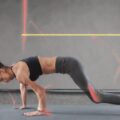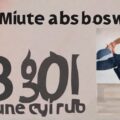Understanding Your Core: The Marvels of Abdominal Muscles Anatomy
Our bodies are incredible machines, and at the center of it all lies our core – a complex network of muscles that not only define our physique but play a crucial role in our overall health and wellbeing. Let’s embark on a journey to explore the fascinating world of abdominal muscles anatomy, appreciating the intricate design that allows us to move, breathe, and live our daily lives with ease.
The Fantastic Four: Main Abdominal Muscle Groups
The abdominal region consists of four primary muscle groups, each with its unique function and contribution to our core strength:
- Rectus Abdominis: Often referred to as the “six-pack” muscles, these long, paired muscles run vertically on each side of the anterior wall of the abdomen.
- External Obliques: These muscles are on the lateral and anterior parts of the abdomen, running diagonally downward and forward.
- Internal Obliques: Located just beneath the external obliques, these muscles run diagonally upward and forward.
- Transversus Abdominis: The deepest of the abdominal muscles, this layer wraps around your spine for protection and stability.
Each of these muscle groups works in harmony, allowing us to perform a wide range of movements and providing vital support to our spine and internal organs.
The Rectus Abdominis: More Than Just Aesthetics
While the rectus abdominis is often associated with the coveted “six-pack” look, its importance goes far beyond aesthetics. This muscle plays a crucial role in:
- Flexing the spine, allowing us to bend forward
- Maintaining posture
- Assisting in breathing by helping to expel air from the lungs
- Supporting the internal organs
It’s essential to remember that having visible abs doesn’t necessarily equate to having a strong core. True core strength comes from balanced development of all abdominal muscles and overall body health.
The Dynamic Duo: External and Internal Obliques
The obliques are our body’s natural corset, providing support and allowing for rotational movements. These muscles work together to:
- Rotate the trunk
- Bend the body sideways (lateral flexion)
- Assist in breathing
- Stabilize the pelvis and lower back
When we think about the obliques, it’s beautiful to consider how they allow us to twist, turn, and move in so many directions, enabling us to interact with our environment and loved ones in meaningful ways.
Transversus Abdominis: The Deep Stabilizer
Often overlooked but incredibly important, the transversus abdominis is our body’s natural weight belt. This deep muscle layer:
- Compresses the abdominal contents
- Provides stability to the spine and pelvis
- Plays a crucial role in core strength and stability
- Assists in forceful exhalation
Engaging this muscle through mindful exercise and even deep breathing can significantly improve our overall core strength and spinal health.
Nurturing Your Core: A Holistic Approach
Understanding abdominal muscles anatomy isn’t just about knowing which exercises target which muscles. It’s about appreciating the intricate system that allows us to move, breathe, and live. Here are some compassionate ways to nurture your core:
- Mindful Movement: Engage in exercises that make you feel good, whether it’s yoga, Pilates, or simply taking a walk in nature.
- Balanced Nutrition: Nourish your body with wholesome foods that support muscle health and overall wellbeing.
- Proper Rest: Allow your muscles time to recover and regenerate through adequate sleep and relaxation.
- Stress Management: Practice stress-reduction techniques like meditation or deep breathing, which can help relax tense abdominal muscles.
- Posture Awareness: Be mindful of your posture throughout the day, engaging your core to support your spine.
Remember, the goal isn’t to achieve a certain look, but to cultivate a strong, healthy core that supports you in all aspects of life.
Frequently Asked Questions
1. How long does it take to strengthen abdominal muscles?
The time it takes to strengthen abdominal muscles varies from person to person, depending on factors like current fitness level, consistency in exercise, and overall lifestyle. With regular, targeted exercises and a balanced diet, you may start feeling stronger within a few weeks, though visible changes may take longer. Remember, the journey is about progress, not perfection.
2. Can I target specific areas of my abs for fat loss?
It’s a common myth that you can spot-reduce fat from specific areas. Fat loss occurs throughout the body when you create a calorie deficit through diet and exercise. Focus on overall health and fitness rather than targeting specific areas. Your body will lose fat in a pattern determined by genetics and hormones.
3. Are ab exercises safe during pregnancy?
Many ab exercises can be safe during pregnancy, but it’s crucial to consult with your healthcare provider before starting or continuing any exercise routine. As your pregnancy progresses, you may need to modify exercises to accommodate your changing body. Gentle exercises like pelvic tilts and certain prenatal yoga poses can be beneficial for maintaining core strength during pregnancy.
4. How often should I train my abs?
Like any muscle group, your abs need time to recover and grow stronger. For most people, targeting the abs 2-3 times a week is sufficient. However, remember that many everyday activities and other exercises engage your core, so you’re likely working your abs more often than you realize. Listen to your body and give yourself adequate rest between targeted ab workouts.
5. Can strong abs help with back pain?
Yes, strong abdominal muscles can often help alleviate back pain by providing better support for your spine and improving posture. However, it’s important to develop a balanced core, including strengthening the back muscles as well. If you’re experiencing back pain, it’s best to consult with a healthcare professional or a qualified fitness instructor to develop a safe and effective exercise plan.









